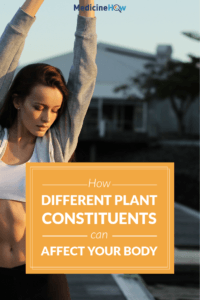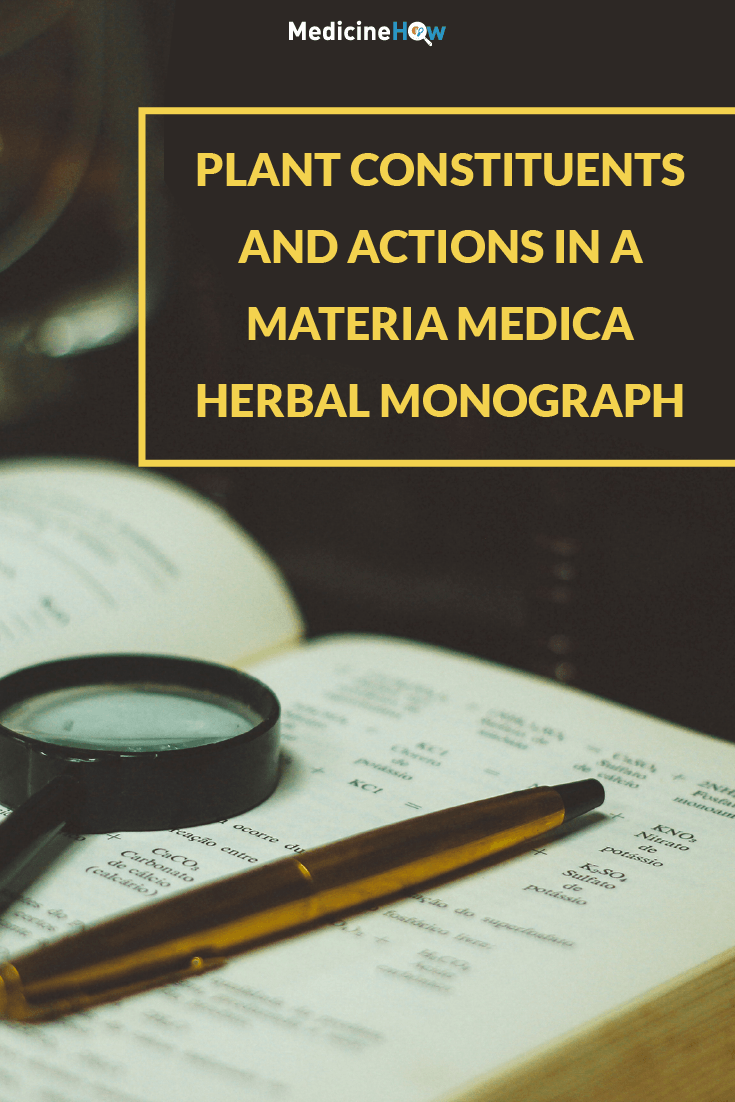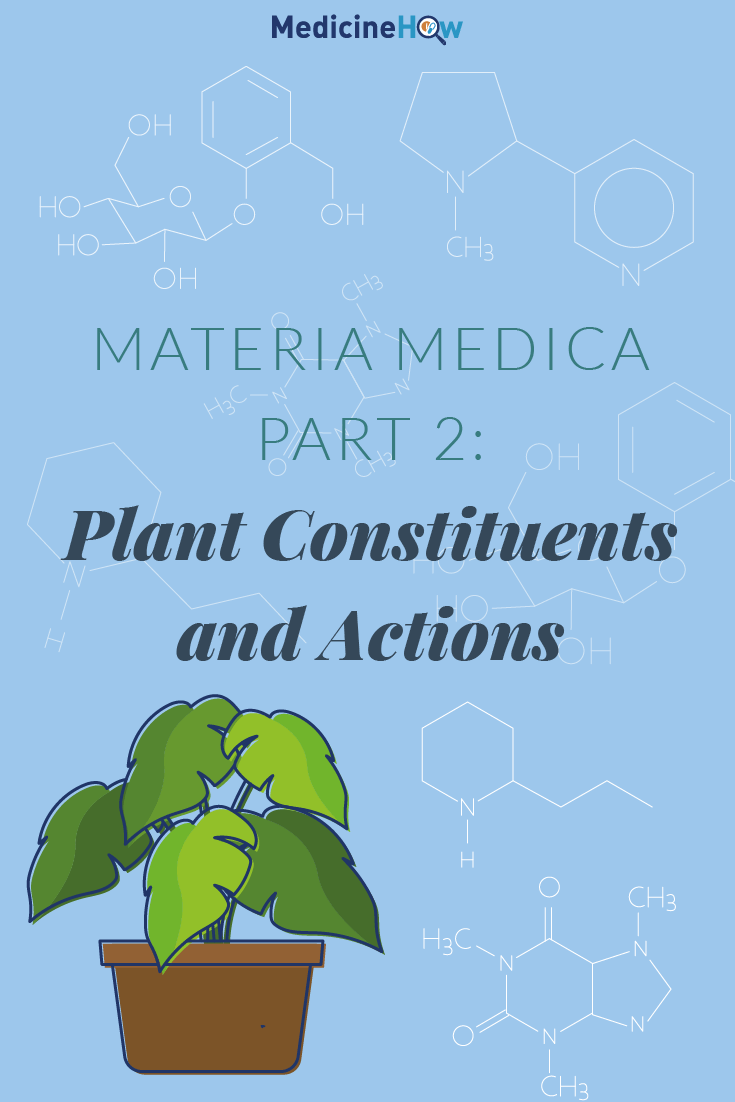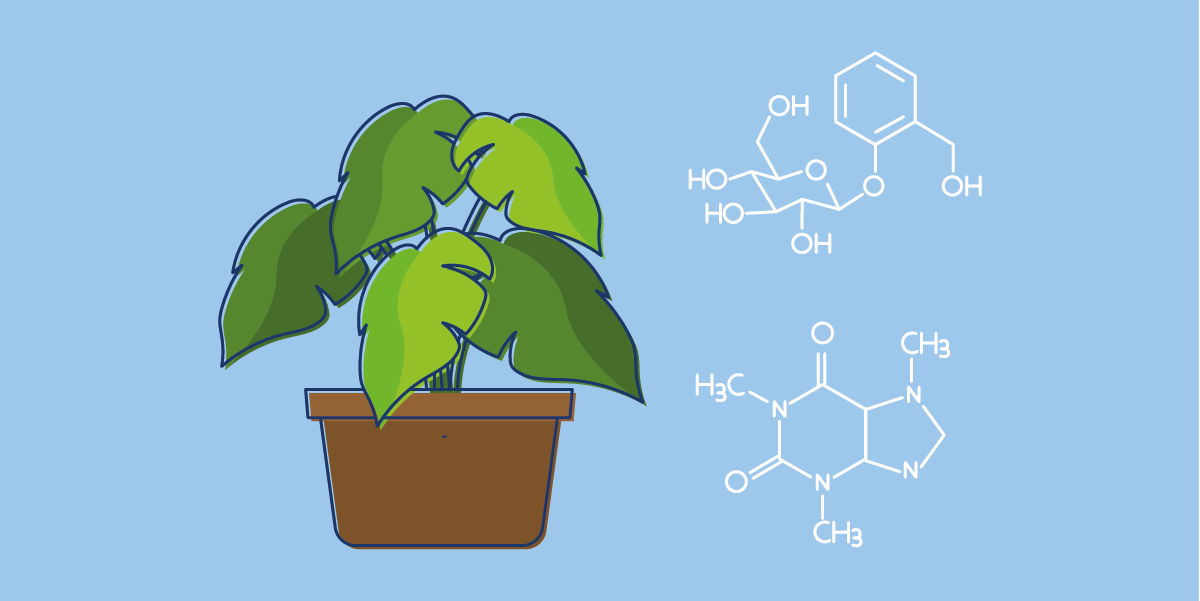
Every plant is made up of a combination of natural chemicals, which are called constituents, and each one is there for a specific reason for the plant to keep it healthy or protect it from dangers.
For example, some constituents might help to attract insects that pollinate the plant, while others deter unwanted insects or other animals that may eat the plant. Some constituents have a particular function to signal stages of growth of the plant, such as when to bloom, produce seed and allow them to disperse. Additionally, certain plant constituents may play a role in protecting the plant from pathogens and diseases by providing mechanisms of resistance.
There are many different chemicals that may exist within a plant, and each of them can have several different purposes and effects on the plant.
When writing a herbal monograph for a particular plant for a materia medica, the key is to identify which constituents are present and why they are there.
Effect of Plant Constituents on the Human Body
In addition to the role of plant constituents to help or protect the plant, they also affect the way that we experience the plant by changing the color, taste and aroma of the plant.
Importantly for a material medica, the plant chemistry and constituents also help to explain the influence that an herb can have on the human body.
There are several groups of plant constituents, which include:
Alkaloids: compounds that contain nitrogen and may regulate plant growth or protect against insects and other animals
Glycosides: a sugar combined with another compound that has therapeutic effects
Lipids: fats, oils, steroid, terpenes and fatty acids
Mucilage: slippery, watery dispersions made up of monosaccharides and acids
Polyphenols: a complex group of substances such as flavonoids, which affect plant color, and tannins, which provide defenses for the plant
Resins: sticky substances that form when volatile oils evaporate
Saccharides: (e.g. sugars and carbohydrates) provide energy and nutrition for the plant
Terpenes: help a plant to thrive in the environment by affecting the flavor, aroma, growth, pollination and protection of the plant
Volatile oils: aromatic oils that evaporate easily
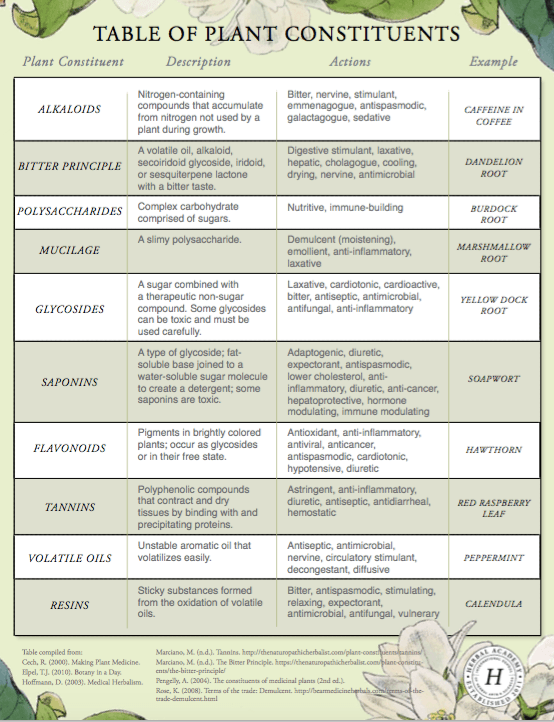
Active Constituents of a Plant
When trying to understand why a plant has a particular affect, it can be helpful to think about the different constituents of the plant and figure out which part is likely to be causing the response. The part that is thought to be mainly responsible is called the active constituent.
In scientific research to investigate the certain properties of a plant, the active constituent of the plant that is the focus of the study because it is useful to explain the individual actions of each part of the plant.
However, it’s important to realize that the active constituent is not the same thing as the whole plant. In fact, sometimes the effect of the active constituent on its own is quite different from using the whole plant as it grows naturally.
For example, salicin is the active constituent found in willow bark, which has various uses in herbalism. However, when someone takes salicin on its own they may experience stomach issues but this doesn’t often happen when someone uses willow bark, even though it contains salicin.
Plant Actions
A plant can have several different influences on the human body, known as herbal actions. Here are a few of the common actions that a plant may have:
Adaptogenic: helps to boost resistance to external stressors and improve adaptability to change
Alterative: helps to purify the blood by controlling the levels of nutrients and proteins, neutralizing acids and eliminating waste.
Analgesic: helps to reduce pain without causing unconsciousness
Anticatarrhal: helps to thin mucus or phlegm in the body so that it flows out of the body more easily
Antimicrobial: helps to destroy or resist microbial pathogens in the body
Antioxidant: helps to protect the body from oxidative damage caused free radicals
Astringent: helps to dry excess moisture from and tighten tissues
Bitter: helps to stimulate digestive enzymes in the body
Carminative: helps to eaze the stomach by expelling gas from the bowels
Demulcent: helps to soothe and protect hot or dry tissues by providing moisture from mucilage
Diaphoretic: helps to induce perspiration and expel pathogens through the skin when taken hot
Diuretic: helps to increase the flow of urine from the body
Emmenagogue: helps to bring on and increase menstrual flow in women
Expectorant: helps to expel mucus from the respiratory system
Hepatic: helps to strengthen and increase bile flow in the liver
Nervine: helps to nourish, calm and tone the nervous system
Stimulant: helps to increase circulation and energy in the body
Tonic: helps to strengthen and tone the body
Vulnerary: helps to repair and soothe inflammation of tissues
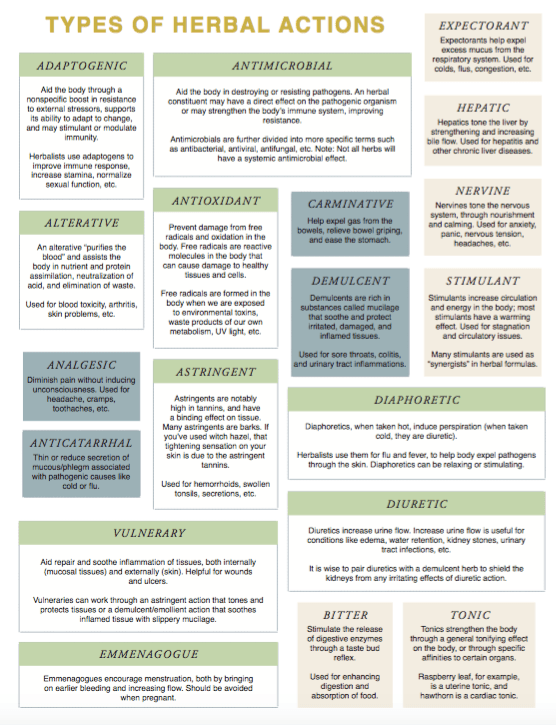
Remember, each plant may have several different actions on the body and is not limited to just one of the above.
Learn More About Plant Constituents and Actions
If you’re interested in learning more about how to describe plants and creating your own material medica, I highly recommend the Herbal Materia Medica Course by The Herbal Academy. I recently worked through this course myself and am sharing the insights I got in this series of posts. Here are a few of the others I’ve written so far:
I’ve genuinely found the course helpful to get a better understanding of herbal medicine and the properties of different plants. If you’re interested in finding out more – or enrolling to learn alongside me – you can register for the course below.
Pin it!
